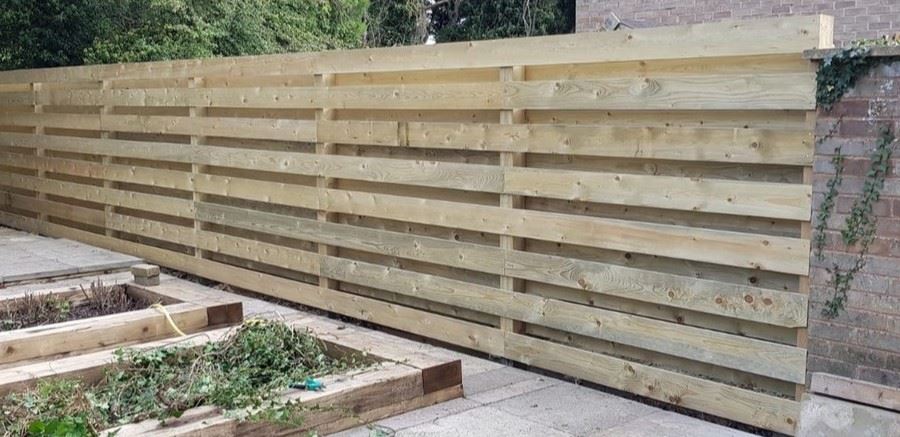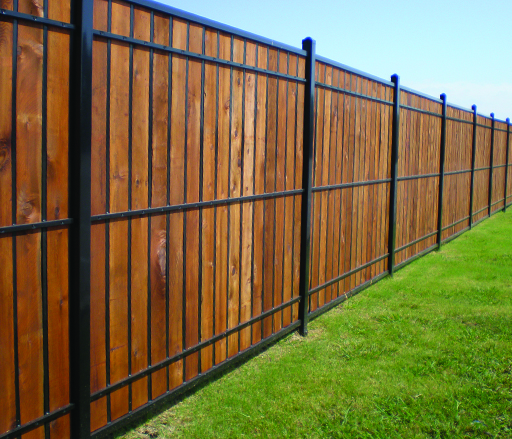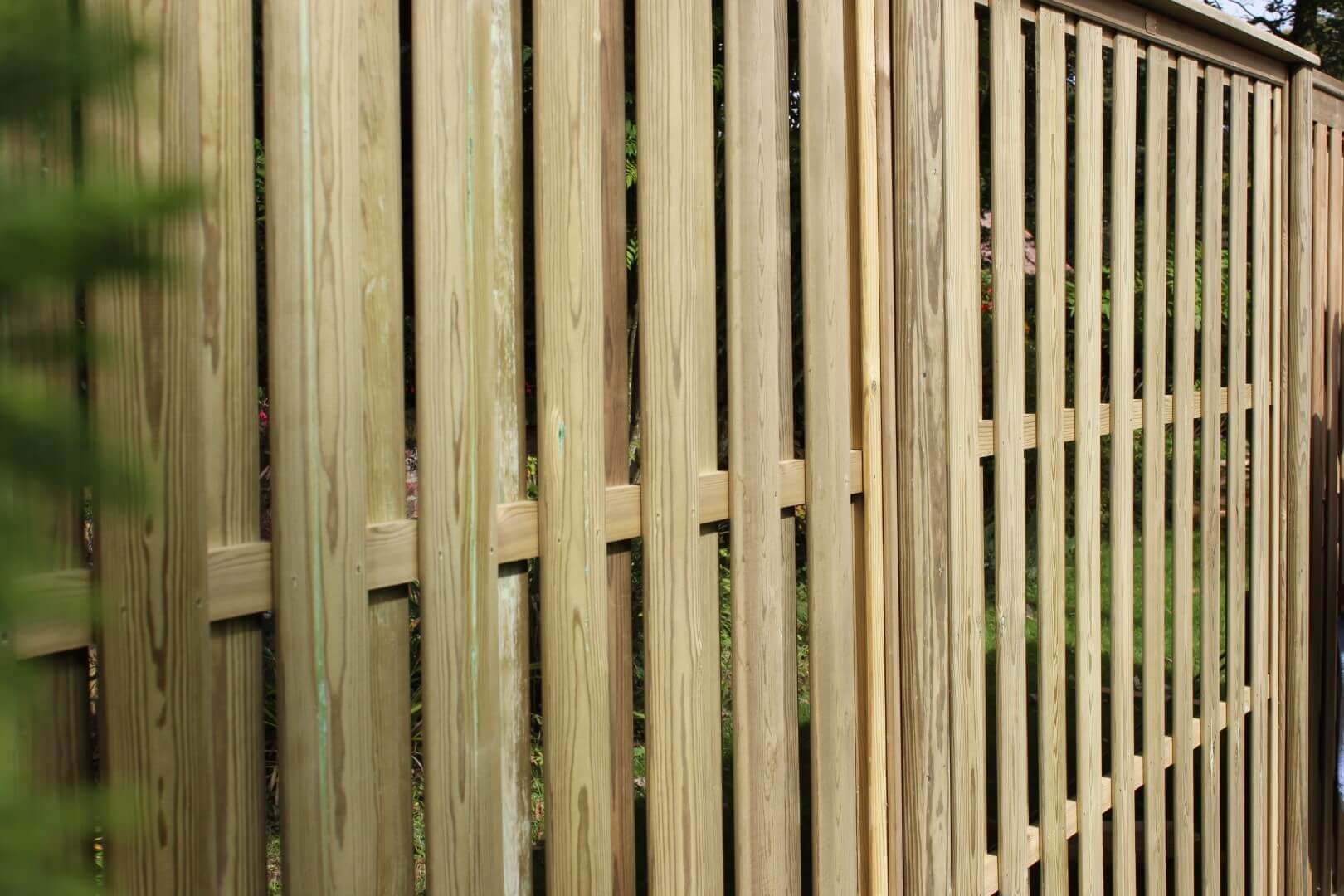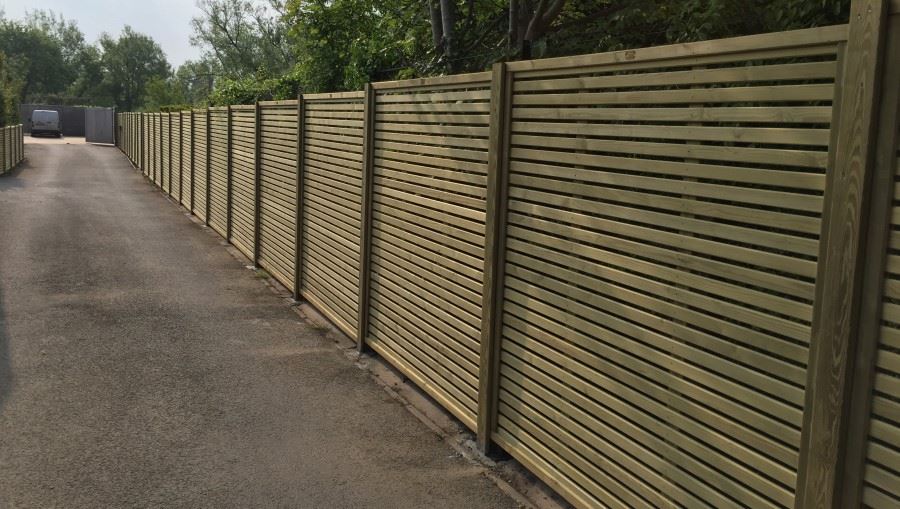Have you ever wondered about the best fencing solutions for high wind areas? It can be frustrating to have a fence that constantly gets blown down or damaged by strong winds. In this article, we’ll discuss different types of fencing solutions that are specifically designed to withstand high winds. Whether you’re looking for a fence to protect your property or simply want to add some privacy to your backyard, we’ve got you covered. You’ll learn about the benefits of each type of fencing and how to choose the right one for your specific needs. So, if you’re tired of your fence being blown away every time a storm hits, keep reading to find out more!
When it comes to fencing solutions for high wind areas, there are several options to consider. One popular choice is using metal or chain link fences. These fences are known for their durability and ability to withstand strong winds. Another option is using composite materials such as vinyl or fiberglass. These materials are lightweight but still provide enough strength to withstand high winds. Additionally, there are also options like living fences or hedges that can act as a natural windbreak. These not only provide a visual appeal but also help in reducing wind pressure on the fence. In the upcoming article, we’ll delve deeper into each of these options and provide you with all the information you need to make an informed decision. So, whether you’re a homeowner or a business owner looking for a reliable fencing solution in high wind areas, we’ve got you covered. Stay tuned to learn more about the best fencing options for high wind areas!
Fencing Solutions for High Wind Areas
Fences serve a multitude of purposes, ranging from enhancing security and privacy to adding aesthetic appeal to a property. However, in high wind areas, selecting the right fence becomes crucial as it must withstand the powerful forces that prevail in such locations. This article will explore various fencing types, considerations for high wind areas, wind-resistant fencing designs, installation tips, maintenance and repair, additional wind mitigation measures, innovative wind-resistant technologies, regulations and permits, cost considerations, environmental impact, noise reduction, aesthetics and design, and security enhancement.

Types of Fencing
Wooden Fencing
Wooden fences are a popular choice due to their natural beauty and versatility. However, they may not always be the best option for high wind areas, as they can easily be damaged by strong gusts. If you still prefer the charm of a wooden fence, consider using thicker, more robust posts and reinforcing the structure with bracing or additional support.
Chain Link Fencing
Chain link fences are known for their durability and affordability. They allow wind to pass through, reducing the risk of damage in high wind areas. However, the gaps in the fence may compromise privacy. To overcome this, you can opt for vinyl slats or windscreen mesh inserts that provide both wind resistance and privacy.
Vinyl Fencing
Vinyl fences are low maintenance, weather-resistant, and come in various styles and colors. They are also a popular choice for high wind areas due to their ability to withstand strong winds. Vinyl fences are impact-resistant and flexible, making them less prone to damage during storms or high-speed winds.
Aluminum Fencing
Aluminum fences are lightweight, durable, and can withstand high winds. They are an excellent choice for areas with frequent wind gusts. Aluminum fences also offer a wide range of styles and can be customized to suit your preferences. Opt for fences with reinforced posts for added strength.
Wrought Iron Fencing
Wrought iron fences are known for their timeless elegance and durability. They can withstand high winds and offer excellent security. However, their solid nature may cause wind to pass through the gaps, leading to potential damage. To enhance wind resistance, consider adding inserts or opting for a design with smaller gaps.
Considerations for High Wind Areas
Importance of Wind Resistance
In high wind areas, the primary consideration when installing a fence is its ability to withstand strong gusts. A poorly designed or weak fence may pose a safety hazard and fail to provide the desired protection. Wind resistance should be a top priority to ensure the longevity and functionality of your fence.
Wind Load Calculation
To determine the wind load that your fence may experience, it is essential to calculate the wind pressure on the surface area of the fence. This calculation takes into account factors such as wind speed, fence height, and the angle at which wind hits the fence. Consulting with a professional or using online tools can help you determine the maximum wind load your fence should be able to withstand.
Fence Height and Wind Speed
The height of your fence plays a crucial role in its wind resistance. Taller fences create a larger surface area for the wind to exert force on, increasing the chances of damage. Understanding the wind speed in your area and selecting an appropriate fence height can help minimize the risk.
Spacing between Posts
The spacing between fence posts is another vital consideration in high wind areas. Closer spacings increase the overall stability and strength of the fence, reducing the chances of it being easily toppled over. Consider using cross-bracing or additional support to reinforce the fence structure.
Choosing the Right Materials
Selecting the right materials for your fence is key to its wind resistance. Opt for materials that are robust, durable, and able to withstand the forces of high winds. This may include reinforced posts, thicker panels, or specific wind-resistant designs. Consult with fencing professionals to determine the best materials for your specific needs.

Wind-Resistant Fencing Designs
Slatted Fences
Slatted fences, also known as picket fences, offer less resistance to wind due to their gaps between the slats. The wind can flow through the gaps, reducing the overall force exerted on the fence. However, it is essential to choose sturdy materials and ensure proper installation to maintain the structural integrity of the fence.
Perforated Fences
Perforated fences have small holes or perforations throughout the material. These holes allow wind to pass through while still maintaining some level of privacy. The design of perforated fences promotes airflow, reducing the pressure exerted on the fence during high winds.
Louvered Fences
Louvered fences are designed with horizontal slats that overlap each other, allowing airflow while still providing privacy. These fences create a barrier for wind, reducing the force exerted on the structure. Louvered fences can be made using various materials, including wood, vinyl, or aluminum.
Windbreak Fences
Windbreak fences, also known as wind screens or wind barriers, are specifically designed to reduce the impact of wind on an area. These fences typically feature solid materials or mesh screens that block or redirect the wind, creating a protective barrier. Windbreak fences can be customized to fit your specific needs and can be installed around the perimeter of a property or in specific areas.
Solid Panel Fences
Solid panel fences, such as concrete or stone walls, provide excellent wind resistance due to their solid construction. These fences create a physical barrier that obstructs the wind, minimizing the force exerted on the fence. Solid panel fences are commonly used in high wind areas or areas that require maximum wind resistance, such as near coastlines or open plains.
Installation Tips for High Wind Areas
Proper Post Installation
Proper post installation is crucial for the stability and wind resistance of a fence. The depth and width of fence posts should be sufficient to withstand the force of high winds. Consult with fencing professionals to determine the appropriate post size and depth for your specific needs.
Strengthening Fence Posts
If you live in an area prone to high winds, consider strengthening your fence posts to ensure its stability. This can be done by adding concrete footings around the base of each post or using post anchors for additional support. Reinforcing your posts will help withstand the lateral forces exerted by the wind.
Securing Fence Panels
Securing fence panels properly is essential to prevent them from becoming loose or detached during high winds. It is recommended to use screws instead of nails, as they provide greater holding power. Additionally, consider adding extra support, such as cross-bracing or horizontal rails, to strengthen the fence panels.
Using Concrete Footings
Using concrete footings is an effective way to enhance the stability and wind resistance of your fence. Concrete footings provide a solid base for the fence posts and prevent them from shifting or being uprooted during high winds. Consult with professionals to determine the appropriate size and depth for the footings based on your specific requirements.
Adding Wind Bracing
Wind bracing is another method to reinforce the strength of your fence. This involves adding diagonal support beams to the fence structure, increasing its resistance to lateral forces. Wind bracing can be particularly beneficial for taller fences or fences with large surface areas.

Maintenance and Repair
Regular Inspection
Regularly inspecting your fence is crucial to identify any damage or areas that may compromise its wind resistance. Look for cracked or broken components, loose fasteners, leaning posts, or signs of wear and tear. Addressing these issues promptly can prevent further damage and ensure the longevity of your fence.
Painting and Staining
Painting or staining your fence not only enhances its appearance but also provides an additional layer of protection against the elements. A well-maintained and properly sealed fence is less prone to damage from wind, moisture, and UV rays. Regularly inspect the painted or stained surface for any signs of peeling or fading and address these issues promptly.
Replacing Damaged Components
If any components of your fence become damaged, such as panels, posts, or fasteners, it is important to replace them promptly. Damaged components compromise the structural integrity and wind resistance of the fence. Consult with fencing professionals to ensure proper replacement and installation.
Fixing Loose Fasteners
Loose fasteners, such as screws or nails, can weaken the overall structure of the fence, making it more susceptible to wind damage. Regularly inspect and tighten any loose fasteners to maintain the integrity of the fence. Consider using corrosion-resistant fasteners for added durability.
Trimming Overhanging Branches
Overhanging branches pose a risk to your fence during high winds, as they can cause damage or even uproot the fence if they fall. Regularly trim any overhanging branches near your fence to minimize the risk of damage. Consult with professionals or arborists for proper tree trimming techniques, particularly if there are large, heavy branches.
Additional Wind Mitigation Measures
Installing Windbreaks
Installing additional windbreaks around your property can significantly reduce the impact of high winds on your fence. Windbreaks, such as hedges, shrubs, or walls, create a physical barrier that redirects or blocks the wind. These can be strategically placed around your fence to provide added protection.
Using Windbreak Trees
Planting windbreak trees is another effective measure to mitigate the impact of high winds on your fence. Windbreak trees, such as evergreens or deciduous trees with dense foliage, can create a protective barrier by deflecting or absorbing the force of the wind. Consult with local nurseries or arborists to select the appropriate trees for your specific climate and needs.
Applying Wind-Resistant Coatings
Applying wind-resistant coatings to your fence can help increase its durability and wind resistance. These coatings are designed to withstand harsh weather conditions and provide an extra layer of protection against wind, rain, and UV rays. Consult with fencing professionals to determine the most suitable wind-resistant coating for your fence material.
Creating Windbreak Walls
Creating windbreak walls, such as brick or stone walls, can be an effective solution for highly exposed areas. These walls act as a physical barrier, redirecting or blocking the wind from reaching your fence. Windbreak walls can be designed to complement your property’s aesthetics while providing maximum wind mitigation.
Building Shelter Belts
Shelter belts, also known as windbreak belts, are long rows of trees or shrubs strategically planted to protect an area from wind. Building a shelter belt around your property can help mitigate the impact of high winds on your fence. When designing the shelter belt, consider the height and density of the trees or shrubs to provide optimal wind protection.

Innovative Wind-Resistant Technologies
Flexible Composite Materials
Flexible composite materials, such as composites reinforced with fiberglass or carbon fiber, offer enhanced wind resistance compared to traditional materials. These materials can withstand high wind forces without bending or breaking, making them an excellent choice for fences in high wind areas.
Aerodynamic Fence Shapes
Incorporating aerodynamic fence shapes can significantly reduce wind resistance and increase the overall stability of the fence. Curved or angled fence panels help redirect wind, reducing the force exerted on the structure. Consult with fencing professionals or engineers to design fences with aerodynamic shapes.
Turbulence-Reducing Features
Adding turbulence-reducing features to your fence design can help reduce the impact of wind gusts. These features, such as winglets or vortex generators, disrupt the airflow around the fence, minimizing turbulence and decreasing the overall force on the structure. Consult with experts in wind engineering or aerodynamics to incorporate these features effectively.
Vortex Generators
Vortex generators are devices that create controlled vortices in the airflow around the fence, reducing the overall wind pressure. These devices can be attached to the fence structure or integrated into the fence design. Vortex generators can enhance the wind resistance of your fence in areas with strong and frequent gusts.
Wind Tunnel Testing
Before investing in a fence for high wind areas, consider testing its wind resistance in a wind tunnel. Wind tunnel testing provides valuable data on the performance and durability of different fence designs under high wind conditions. This testing ensures that the selected fence design is suitable for your specific location and wind conditions.
Regulations and Permits
Local Building Codes
When installing a fence in high wind areas, it is essential to comply with local building codes. Building codes often specify minimum requirements for fence heights, materials, and construction methods to ensure safety and wind resistance. Consult with local authorities or building departments to familiarize yourself with the applicable codes in your area.
Permit Requirements
In some areas, permits may be required for fence installation, particularly in high wind zones. This is to ensure that the fence meets all necessary safety and construction standards. Check with your local building department or municipality to determine if a permit is required and the associated regulations.
Height Restrictions
Certain areas may have height restrictions for fences, even in high wind areas. These restrictions are often imposed to preserve sightlines, maintain aesthetics, or comply with local regulations. It is crucial to be aware of any height restrictions in your area before selecting a fence design.
HOA Guidelines
If you live within a homeowner’s association (HOA), there may be additional guidelines or restrictions regarding fence installation. HOAs often have specific aesthetic requirements or architectural guidelines to maintain neighborhood cohesion. Familiarize yourself with the HOA guidelines before selecting a fence design to ensure compliance.
Historical District Considerations
In historical districts or areas with architectural significance, there may be additional considerations and regulations regarding fence installation. Preservation of the historical character and aesthetics of the area may restrict certain fence designs or materials. Engage with local historical or preservation boards to understand the specific requirements for fences in historical districts.

Cost Considerations
Material Costs
The cost of materials for your fence can vary depending on the type of fencing material, design, and customization options. Wooden fences are generally more affordable in terms of upfront material costs, while materials like vinyl or wrought iron may have a higher initial investment. Consider the long-term durability and maintenance requirements of the materials when assessing their cost-effectiveness.
Installation Costs
Installation costs can vary depending on the size, complexity, and terrain of your property. Factors such as labor rates, access to the installation site, and the need for additional equipment or machinery can impact installation costs. Consult with multiple fencing contractors to obtain accurate quotes and make an informed decision.
Maintenance Costs
Consider the long-term maintenance costs associated with each type of fencing material. Some materials may require regular staining, painting, or sealing to maintain their appearance and durability. These ongoing maintenance requirements can add to the overall cost of owning a fence. Opting for low-maintenance materials, such as vinyl or aluminum, may help minimize maintenance costs.
Long-Term Durability
While upfront costs are crucial, it is equally important to consider the long-term durability of the fence. Investing in a high-quality, wind-resistant fence can save you money in the long run as you will avoid frequent repairs or replacements due to wind damage. Consider the warranty offered by manufacturers and choose materials known for their durability in high wind areas.
Return on Investment
When assessing the cost of a fence, consider the potential return on investment it offers. A well-designed, wind-resistant fence can enhance the value and curb appeal of your property. It can also provide additional privacy, security, and protection against wind damage. Evaluate the potential benefits and value addition your chosen fence design can provide.
Environmental Impact
Sustainable Fencing Materials
Opting for sustainable fencing materials is an important consideration in today’s environmentally conscious society. Choose materials that are sourced from sustainable forests or produced using recycled content. Fencing materials such as bamboo, composite, or recycled plastic offer eco-friendly alternatives to traditional options.
Recyclability
Consider the recyclability of your chosen fencing material. Look for materials that can be recycled at the end of their life cycle to reduce waste and minimize environmental impact. Check with manufacturers or suppliers to ensure that there are proper recycling channels available for the specific material you choose.
Energy Consumption
The energy consumption associated with the production and manufacturing of fencing materials also impacts the environment. Research the energy efficiency and conservation efforts of manufacturers before selecting a fencing material. Choosing materials produced through sustainable processes or using renewable energy sources can help minimize energy consumption.
Water Conservation
Water conservation is another aspect to consider when selecting fencing materials. Materials that require minimal water for production or maintenance, such as vinyl or composite, can help conserve water resources. Consult with manufacturers or suppliers for information on water consumption associated with the production and maintenance of the fencing materials.
Ecological Footprint
Assessing the ecological footprint of your chosen fencing materials can help determine their overall environmental impact. Consider factors such as carbon emissions, resource depletion, and waste generation during the production, transportation, installation, and maintenance phases of the fence. Choose materials with a lower ecological footprint to reduce your environmental impact.
Noise Reduction
Choosing Soundproof Materials
If noise reduction is a priority for your property, choosing soundproof fencing materials can significantly minimize unwanted noise. Materials such as composite, PVC, or dense wood provide excellent sound absorption properties. Be sure to select materials specifically designed for noise reduction to maximize the desired effect.
Acoustic Fence Designs
Acoustic fence designs incorporate features that enhance sound insulation. These designs typically include thicker panels, double or staggered construction, and additional sound-absorbing layers. Acoustic fences can be customized with specific materials and configurations to meet your noise reduction requirements.
Proper Insulation
Proper insulation is crucial for effective noise reduction. Ensure that there are no gaps or openings in the fence panels that allow sound to pass through. Implementing sound-dampening insulation materials within the fence structure can further enhance its noise reduction capabilities.
Landscape Buffering
Strategic landscape buffering can work in conjunction with your fence to reduce noise levels. Planting dense vegetation, such as hedges, shrubs, or trees, can act as a physical barrier to sound. The foliage can absorb, deflect, or block noise, providing an additional layer of noise reduction for your property.
White Noise Generators
White noise generators can be utilized to mask unwanted noise and create a more pleasant acoustic environment. These devices emit a consistent sound that helps drown out or minimize specific frequencies of noise. White noise generators can be installed strategically near the fence to help mitigate noise disturbances.
Aesthetics and Design
Match with Landscape
When selecting a fence for high wind areas, consider how it complements your landscape and property aesthetics. Choose a design, color, and material that harmonizes with the surrounding environment. A well-chosen fence can enhance your property’s curb appeal and create a cohesive and attractive outdoor space.
Color Options
Consider the color options available for the type of fence material you choose. Some materials offer a wide range of colors, allowing you to tailor the fence to your desired aesthetics. Whether you prefer a natural wood finish, a vibrant color, or a neutral tone, select a color that suits your overall design vision.
Decorative Elements
Incorporating decorative elements into your fence design can add visual interest and personalization. Consider options such as decorative post caps, finials, or architectural details. These elements can elevate the overall aesthetic appeal of your fence and make it a focal point of your property.
Privacy vs. Openness
Determine the level of privacy you desire from your fence. This will influence the type of design or material you choose. Solid panel fences provide maximum privacy, while slatted or lattice designs offer a more open and breathable feel. Strike the right balance between privacy and openness based on your preferences and needs.
Gate Styles
Gate styles can make a significant impact on the overall visual appeal of your fence. Choose a gate style that complements the fence design and architectural style of your property. Consider options such as arched gates, wrought iron designs, or customized gate panels to create a unique and inviting entrance.
Security Enhancement
Anti-Climb Features
Enhancing security is often a primary concern when installing a fence. Incorporating anti-climb features, such as pointed or spiked finials, can deter intrusion and improve the overall security of your property. Consult with fencing professionals to determine the most suitable anti-climb features for your fence design.
Electronic Access Systems
For added security and convenience, consider integrating electronic access systems into your fence design. These systems can include electronic gates, intercoms, or keycard access. Electronic access systems provide enhanced control and monitoring of entry points, ensuring the security of your property.
Surveillance Integration
Integrating surveillance systems with your fence design can provide an extra layer of security. Consider installing security cameras or motion sensor lights along the fence perimeter. These surveillance measures can deter potential trespassers and provide valuable evidence in the event of a security breach.
Intrusion Detection
Intrusion detection systems can be integrated into your fence design to detect unauthorized entry attempts. These systems can utilize motion sensors, infrared technology, or laser beams to detect and alert you of any potential security breaches. Intrusion detection systems can be customized to fit the specific needs and security requirements of your property.
Locking Mechanisms
Selecting robust and secure locking mechanisms for your gates is crucial for ensuring the security of your property. Choose high-quality locks resistant to tampering or picking. Consult with security professionals to determine the most suitable locking mechanisms for your fence design.
Conclusion
Consideration of wind resistance is essential when selecting a fence for high wind areas. From choosing the right materials and designs to proper installation and maintenance, each aspect contributes to ensuring a sturdy and wind-resistant fence. By following the guidelines presented in this article, you can make an informed decision and enjoy a fence that not only withstands high winds but also enhances the security, aesthetics, and functionality of your property.
Remember to consult with fencing professionals, engineers, or architects to address specific challenges and requirements for your area. Taking the time to invest in a wind-resistant fence guarantees the long-term durability, peace of mind, and value addition that a reliable fence provides.